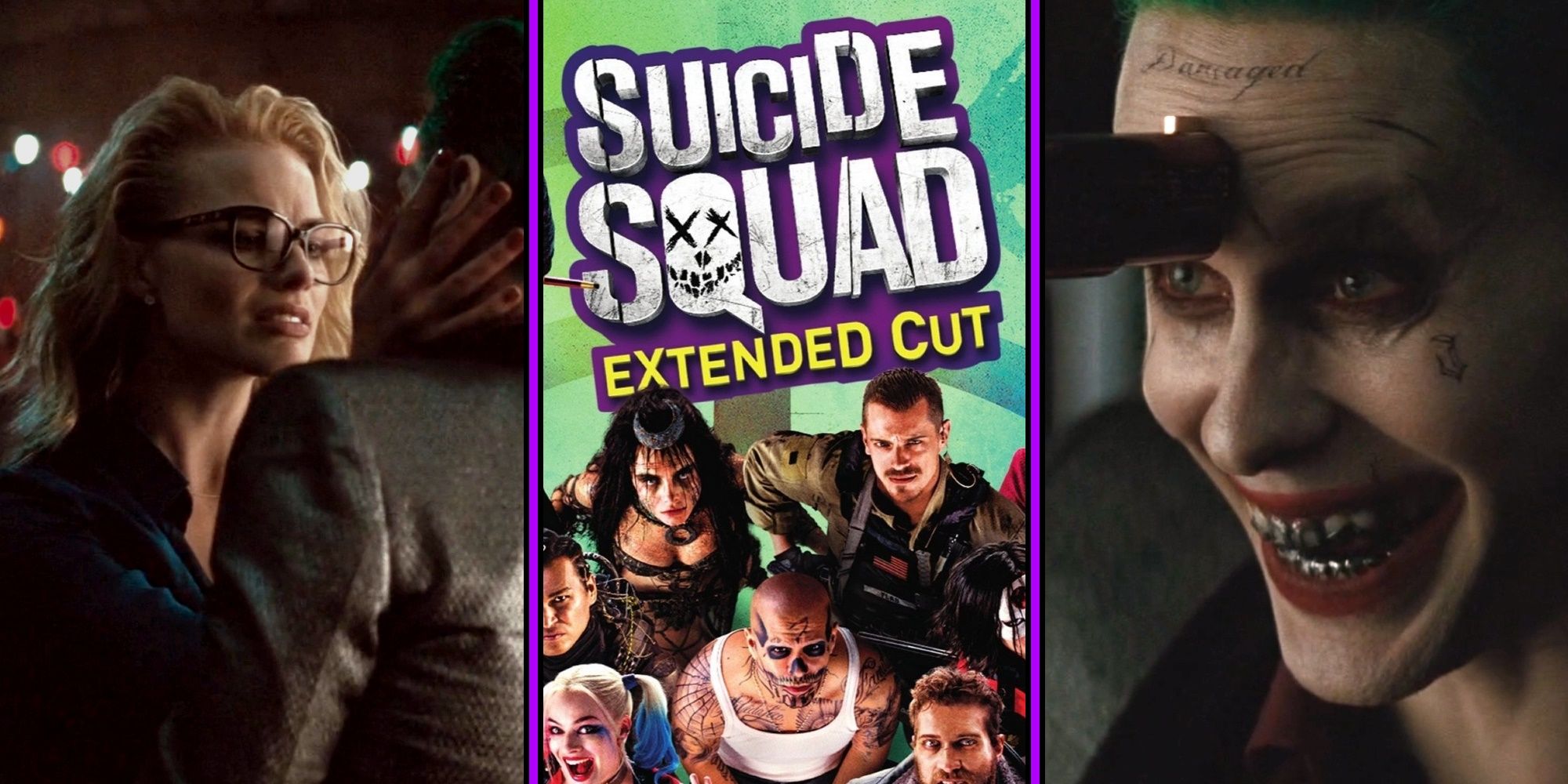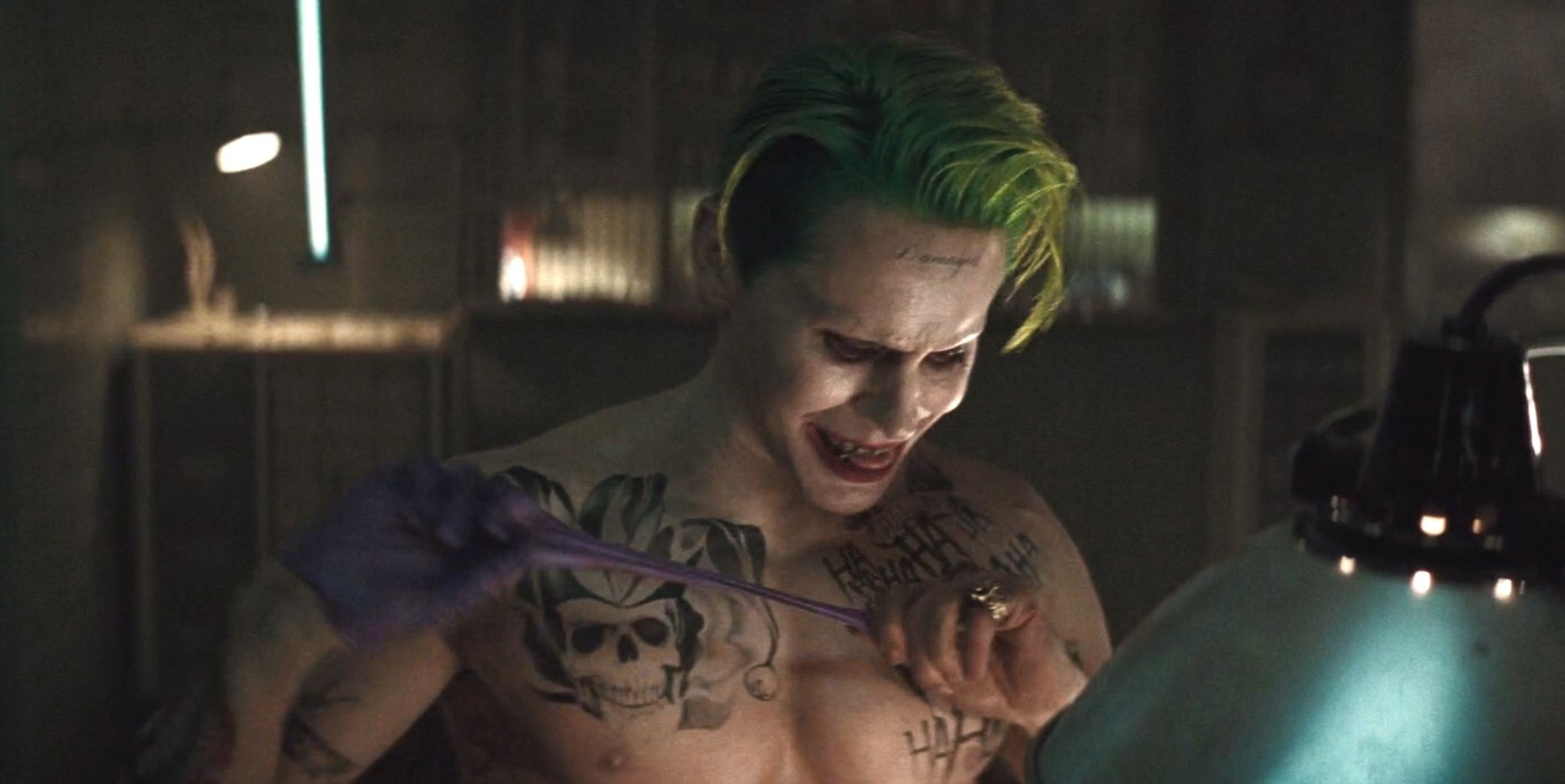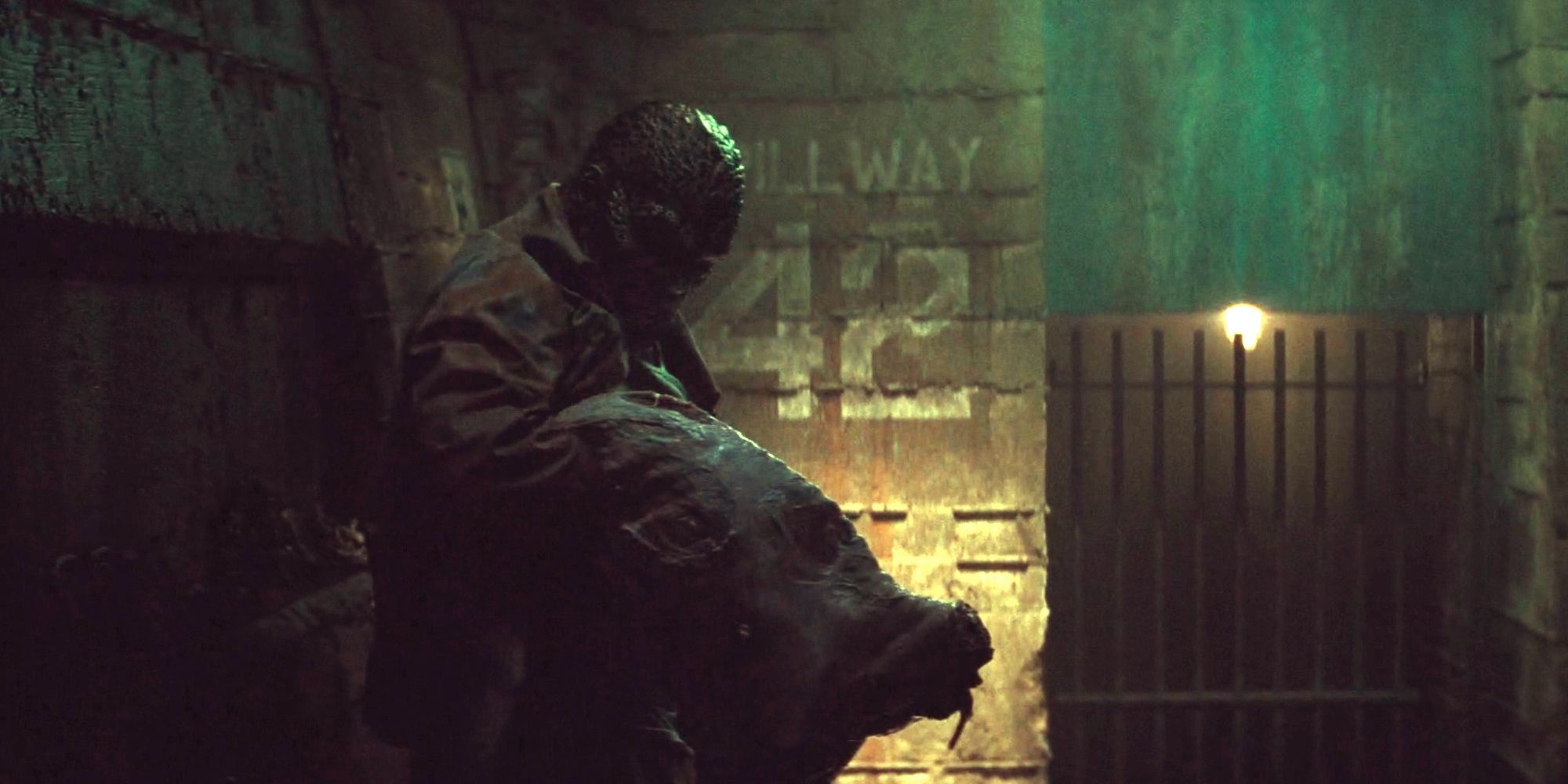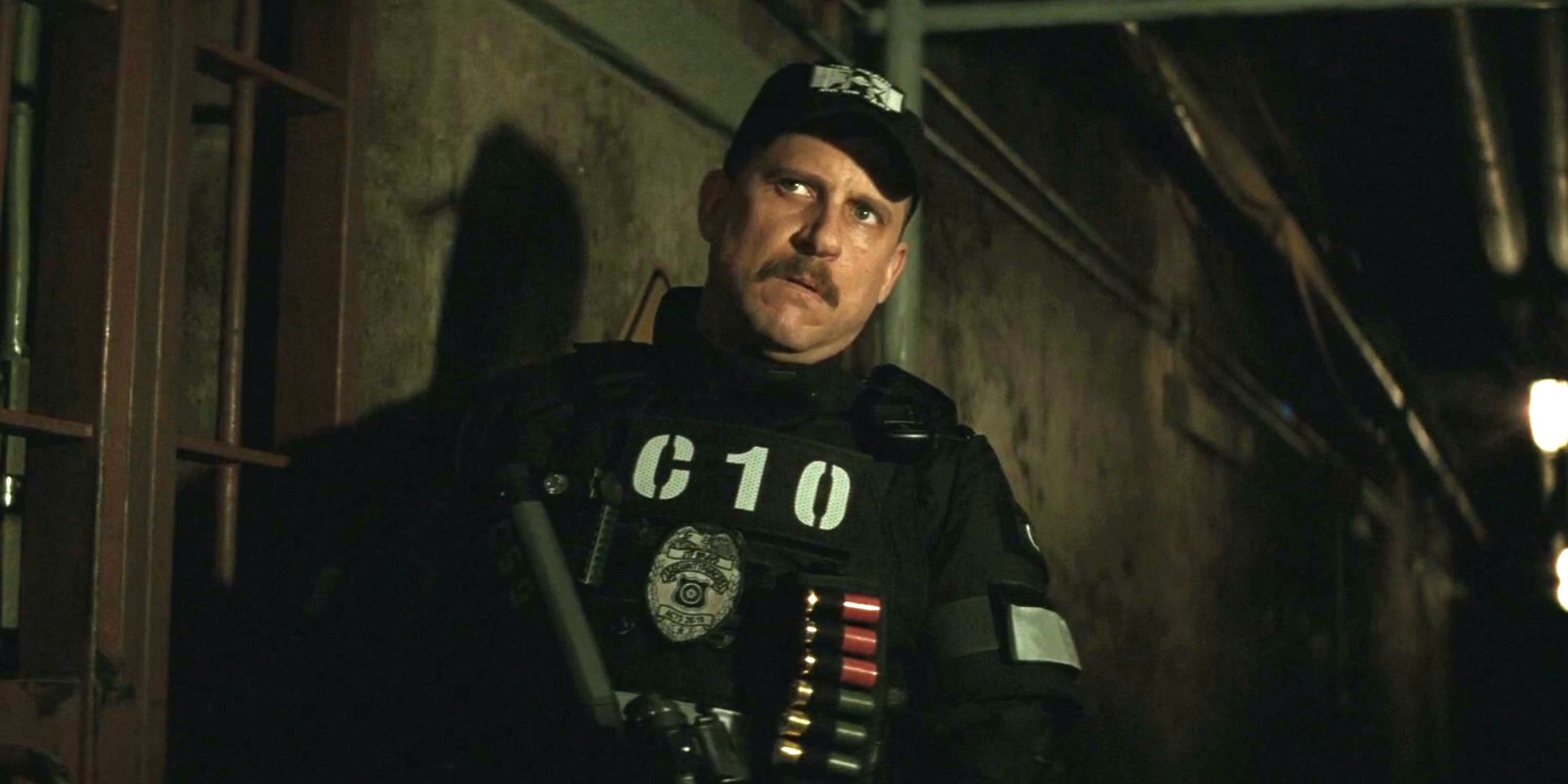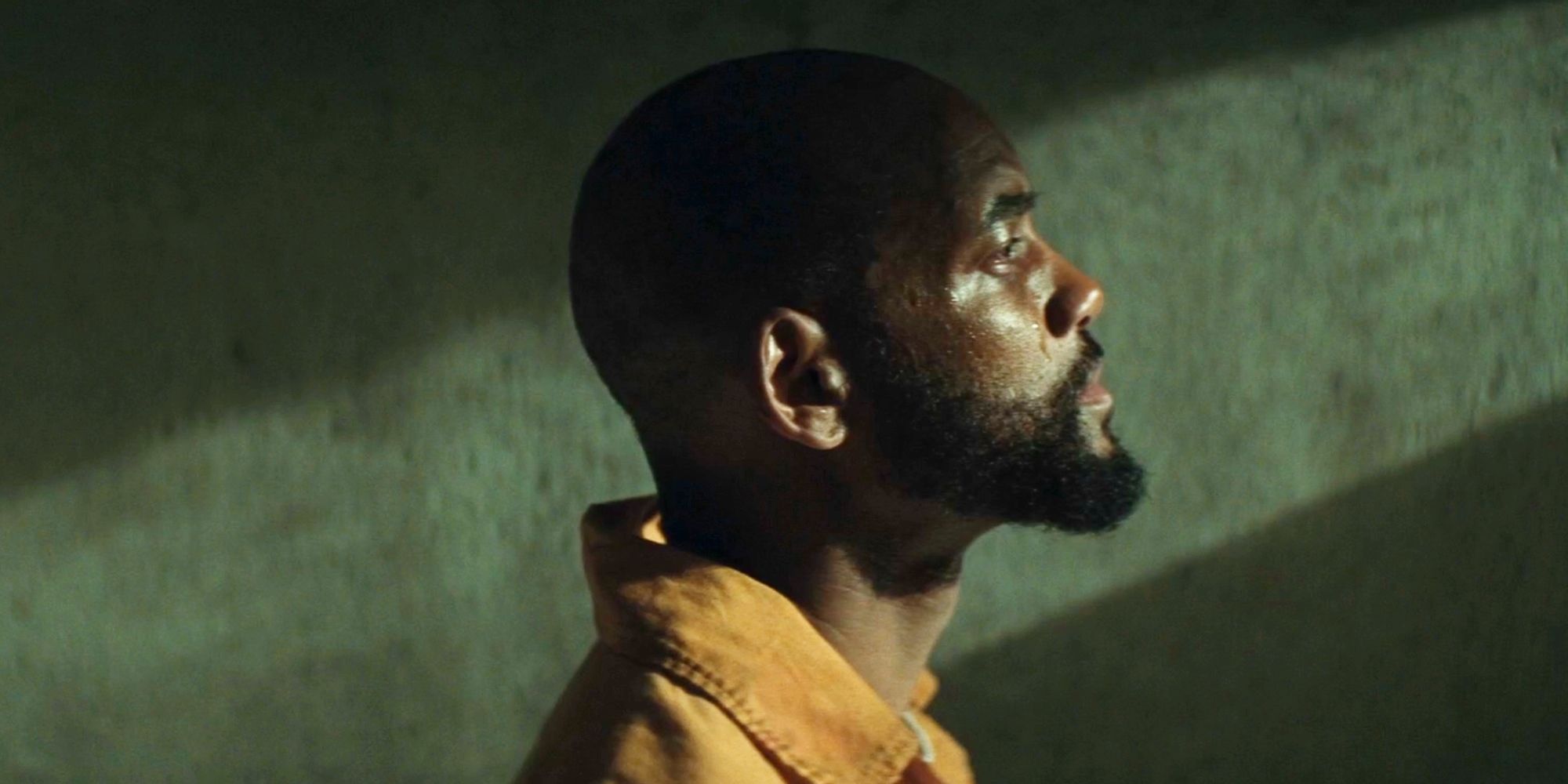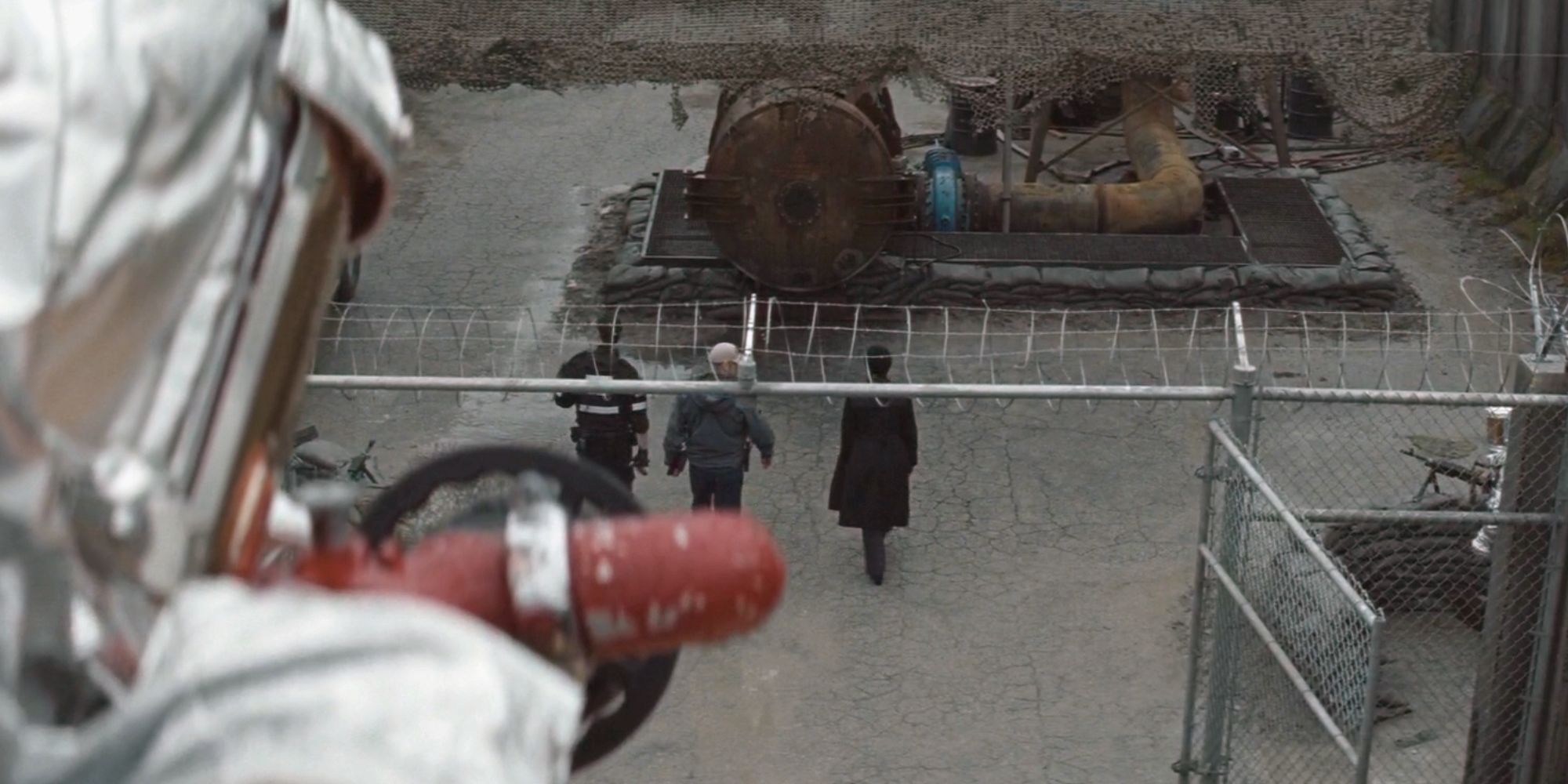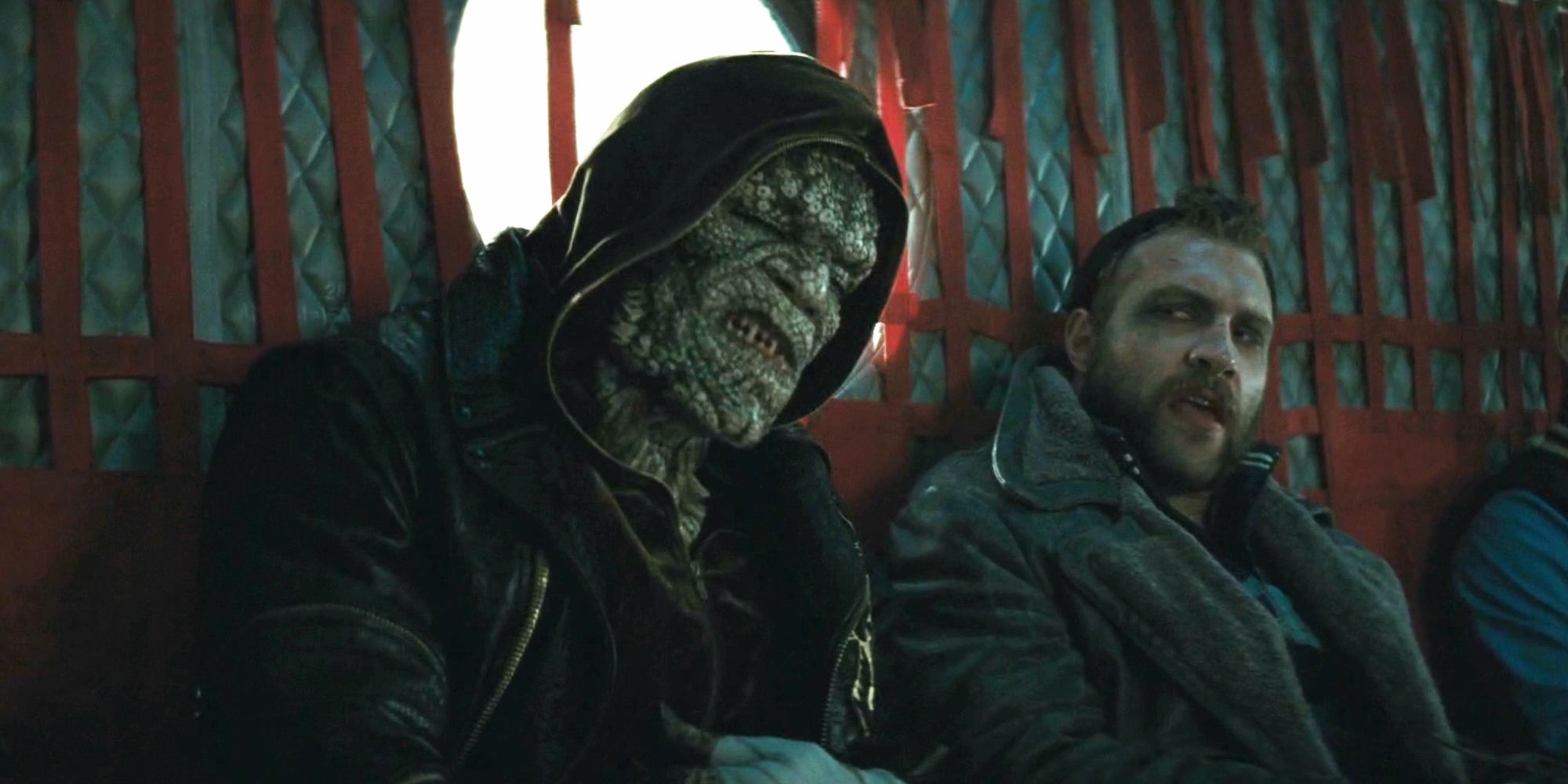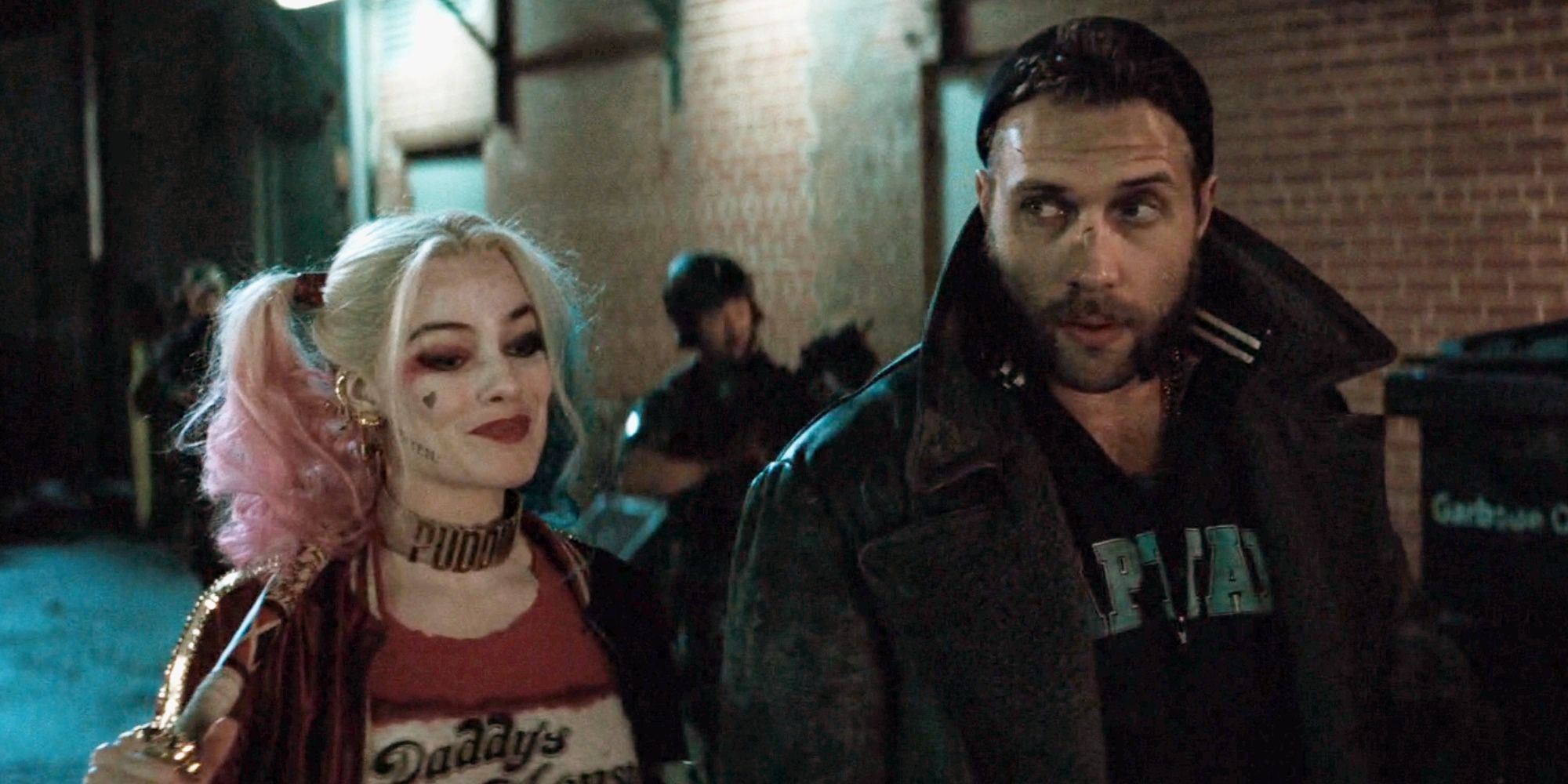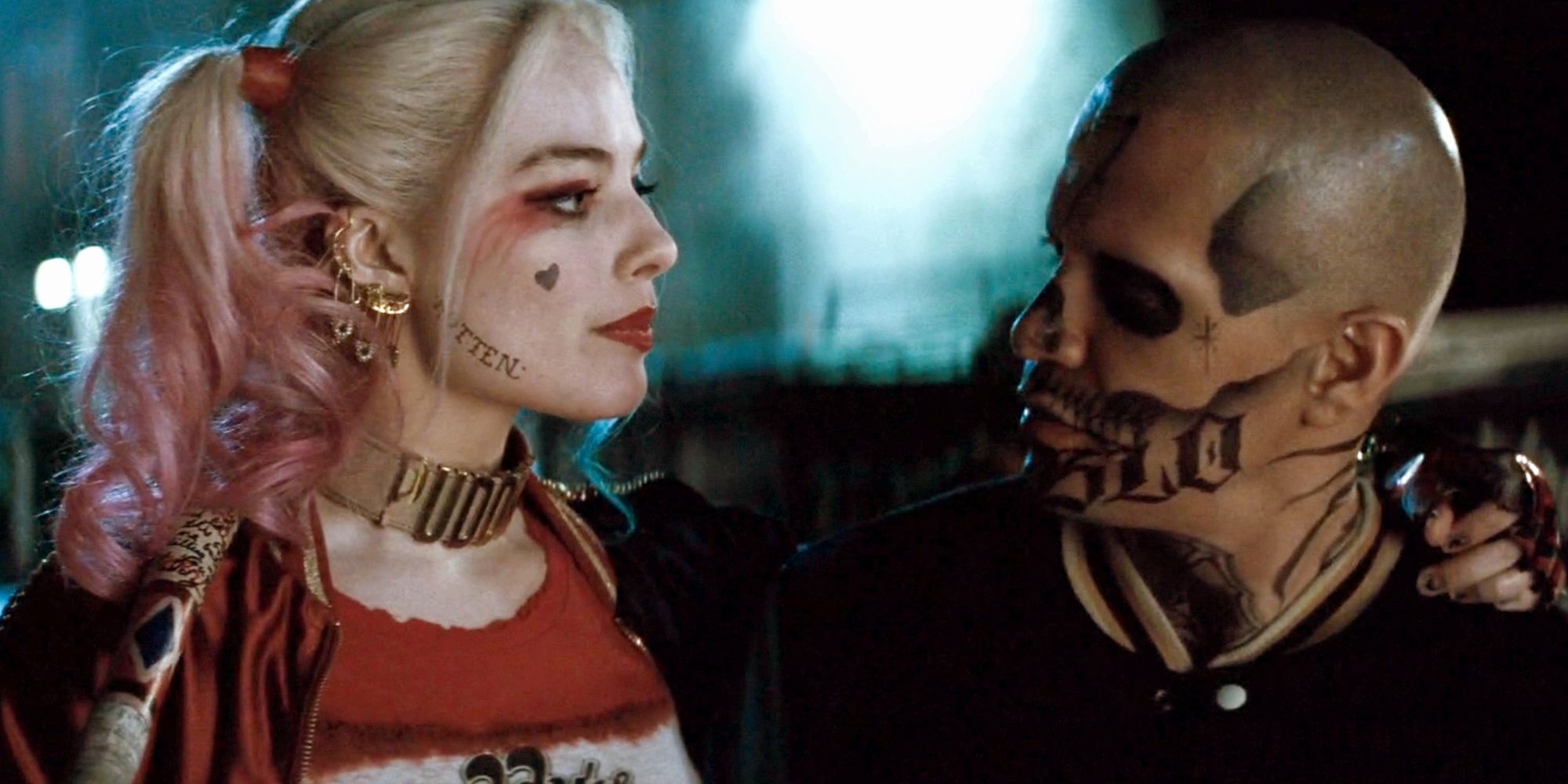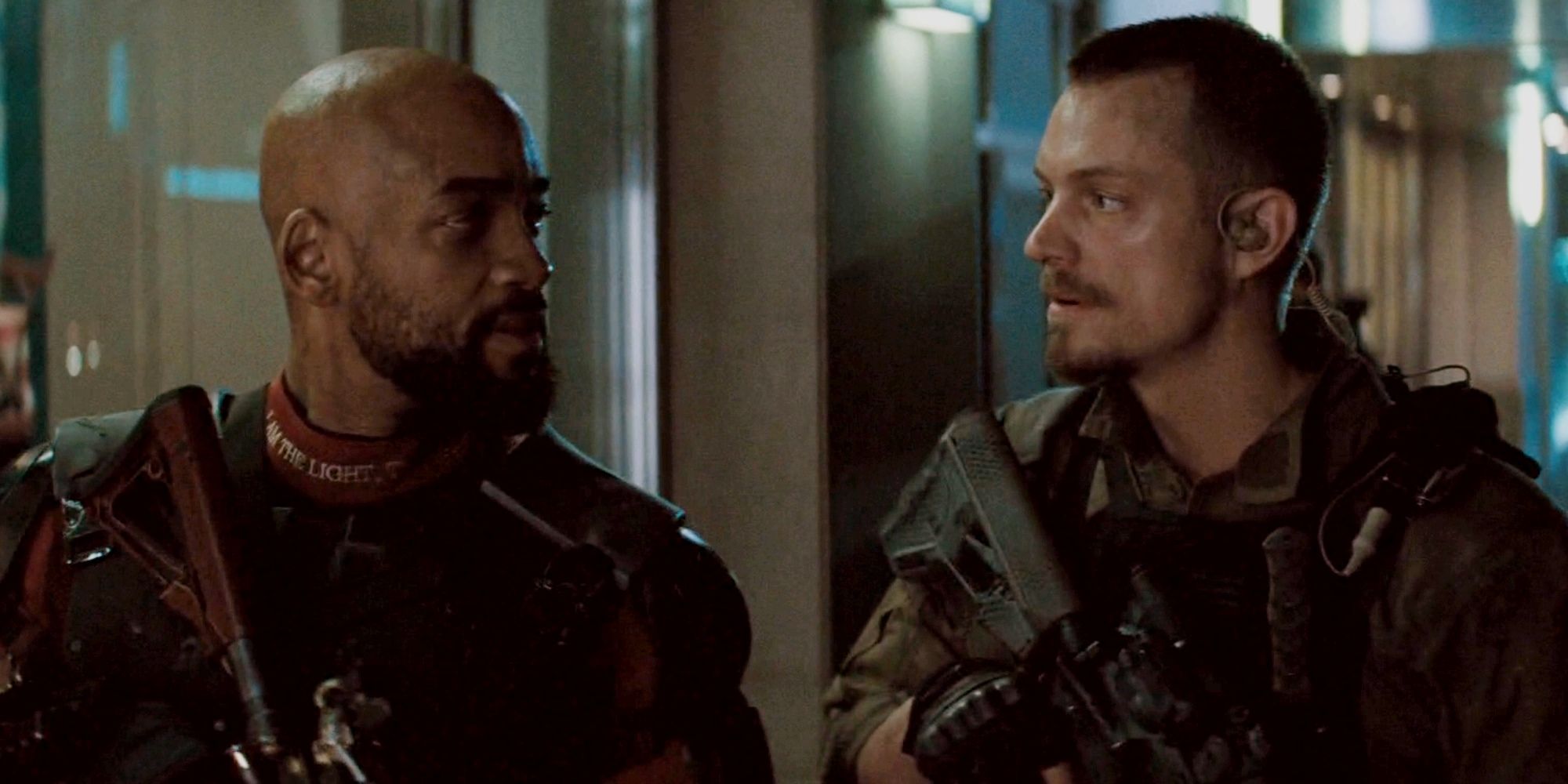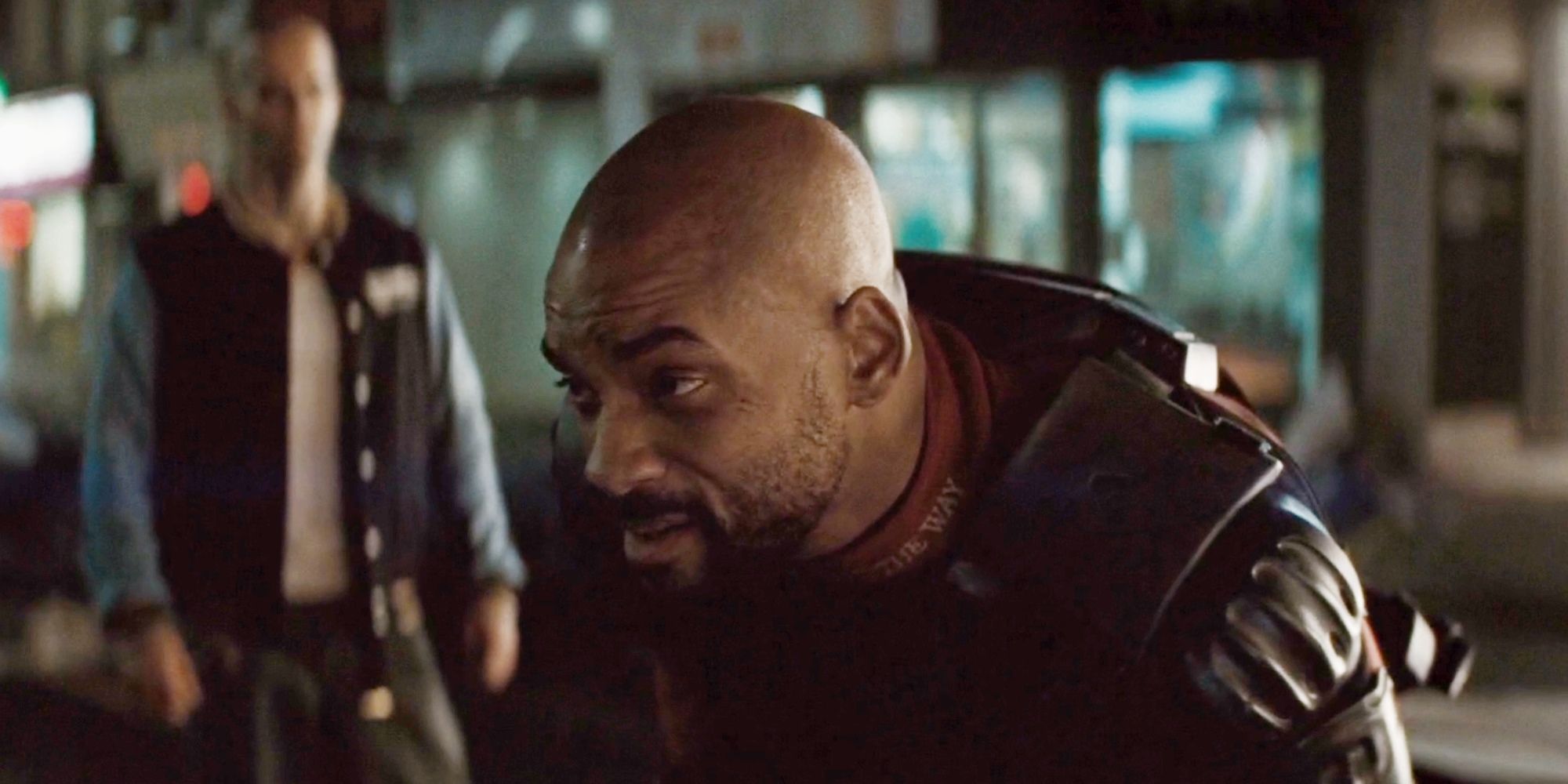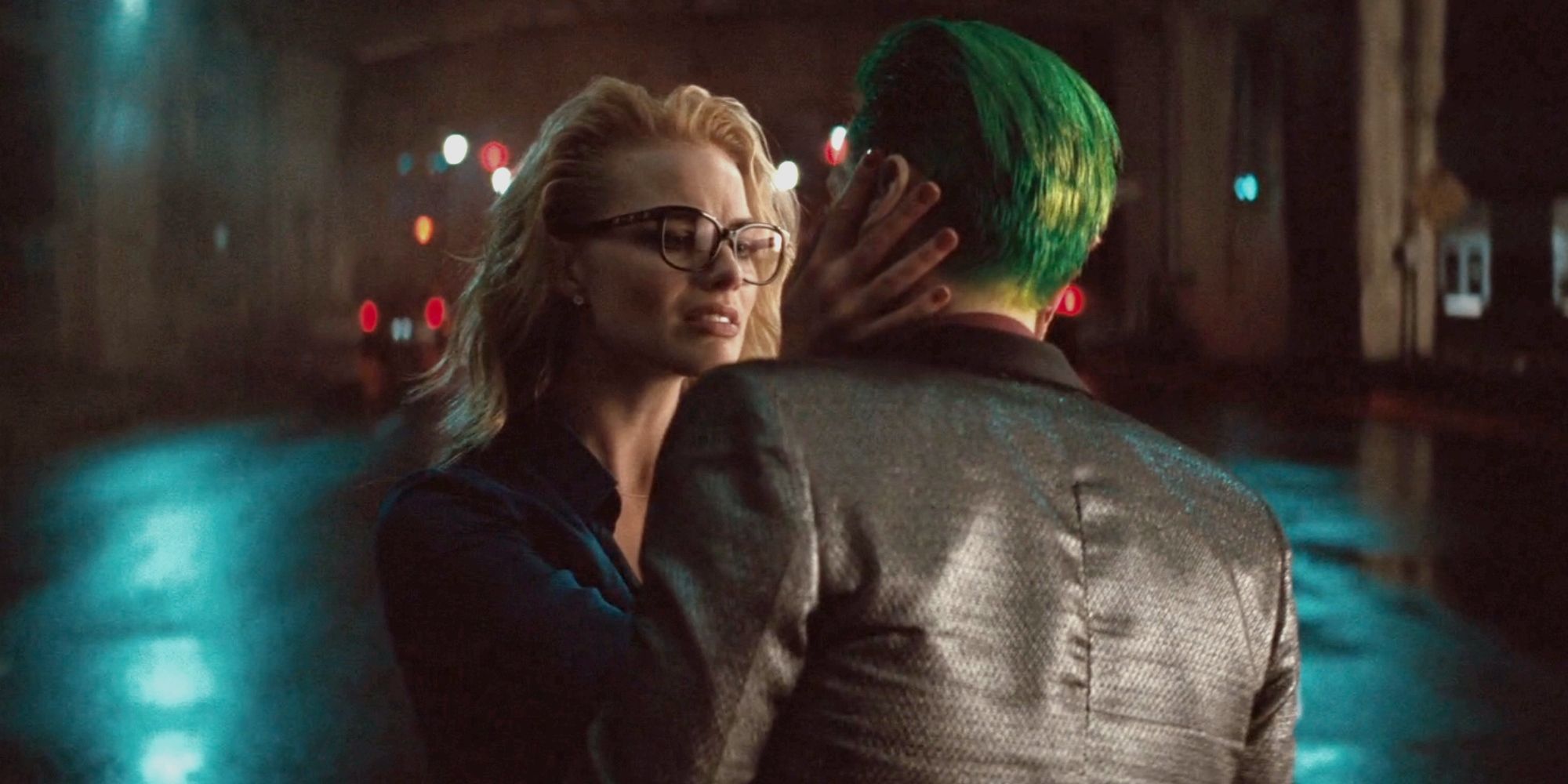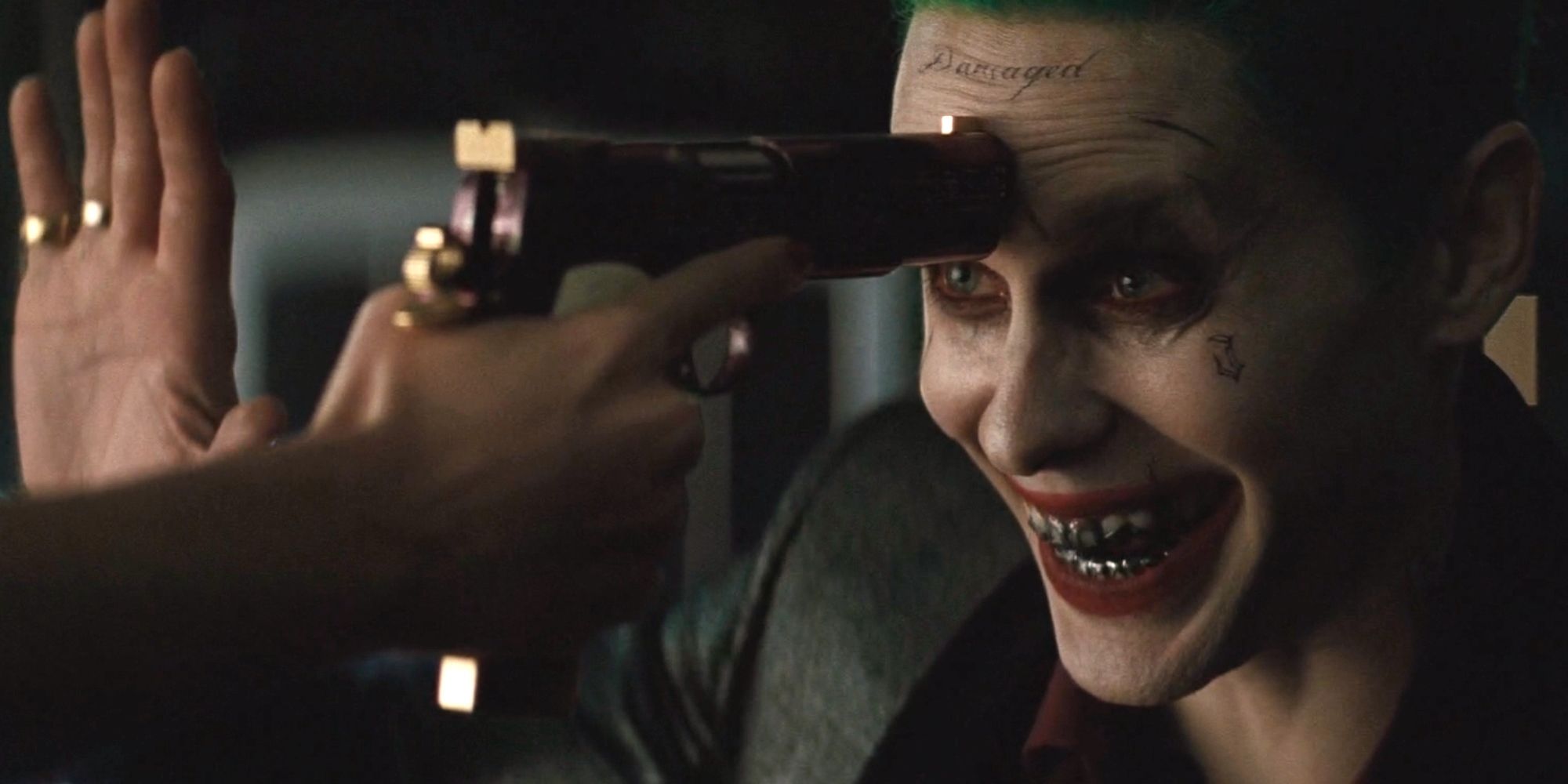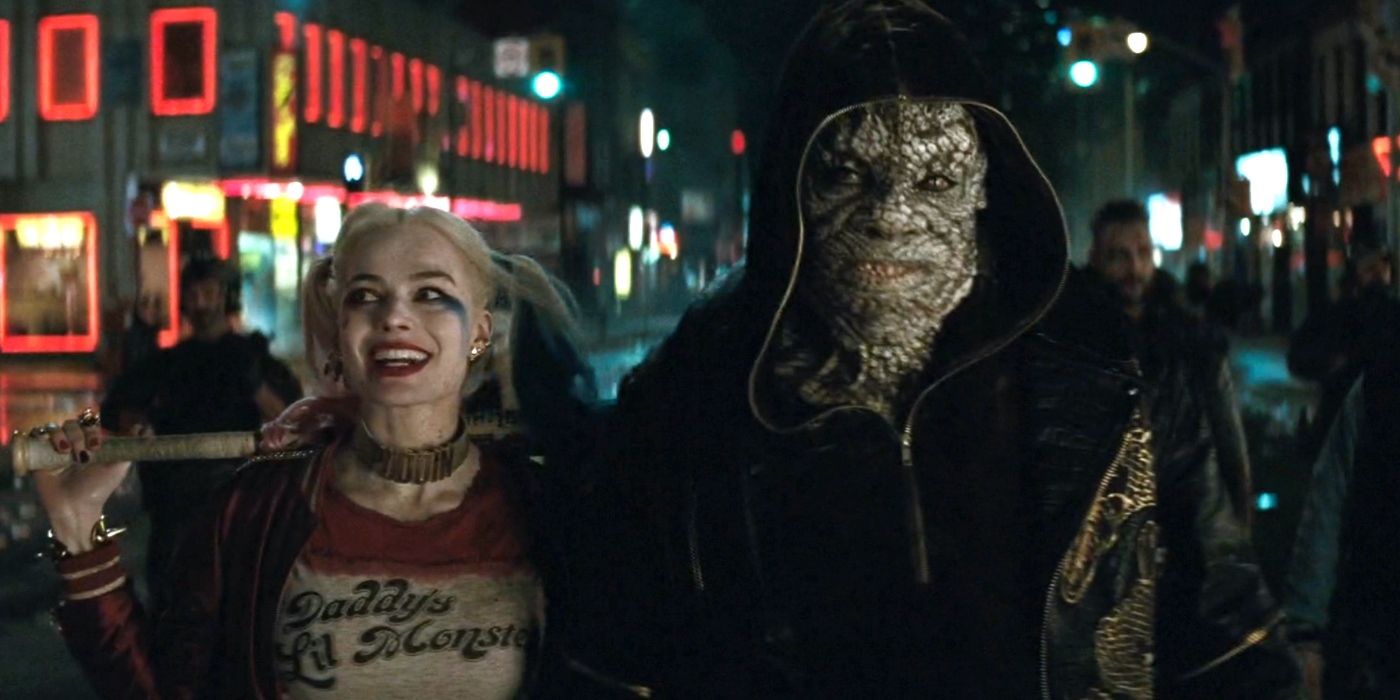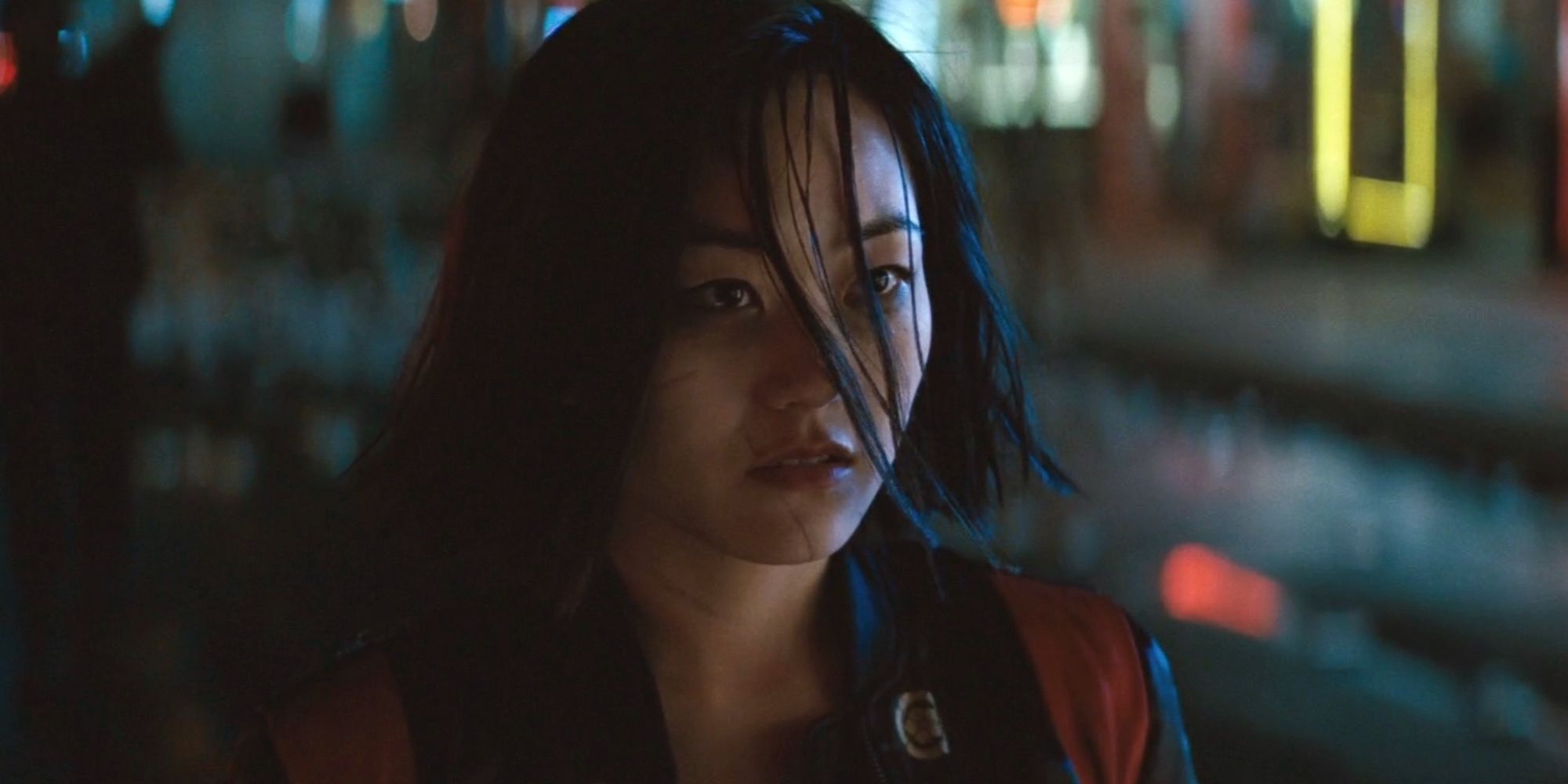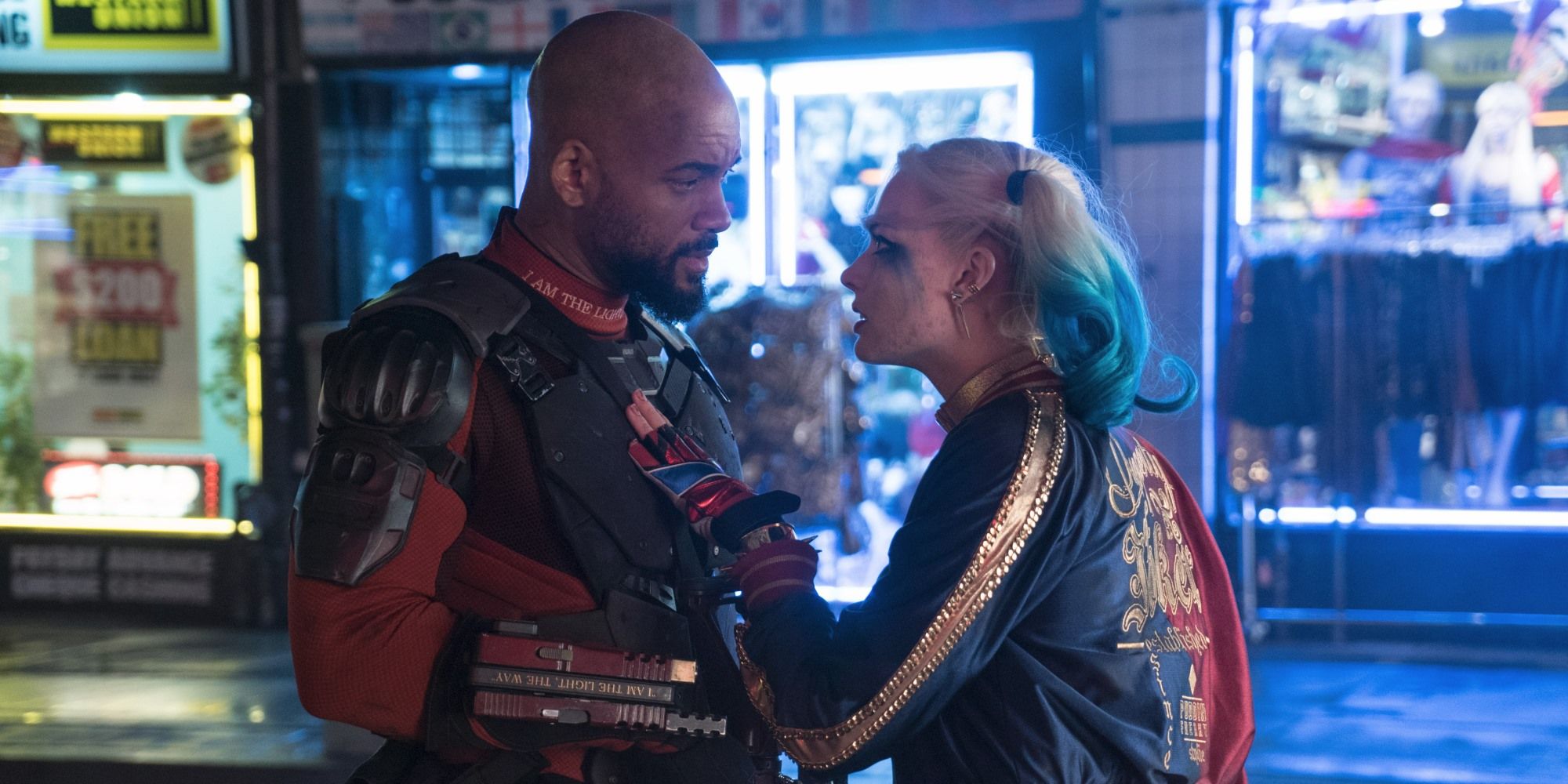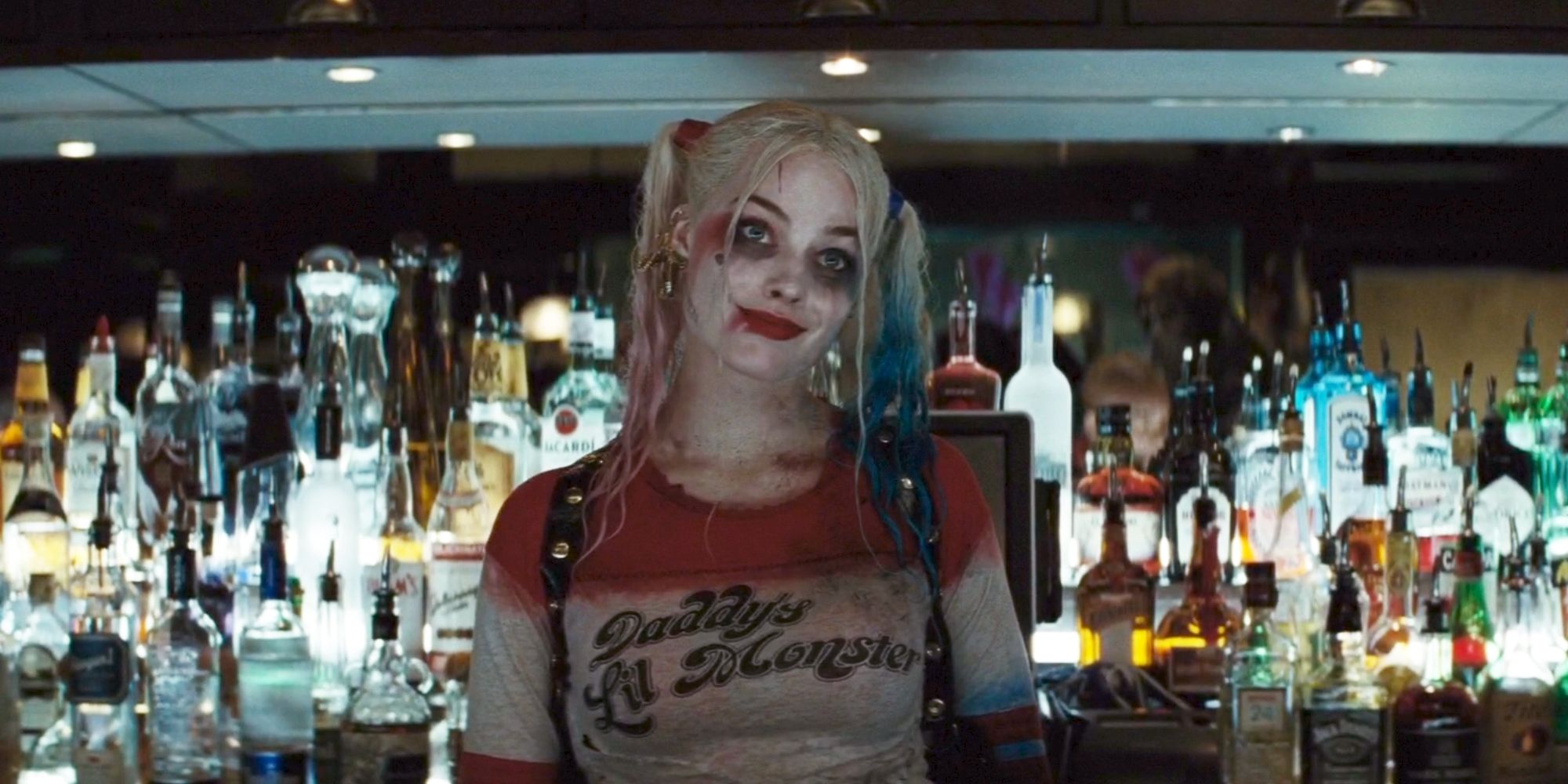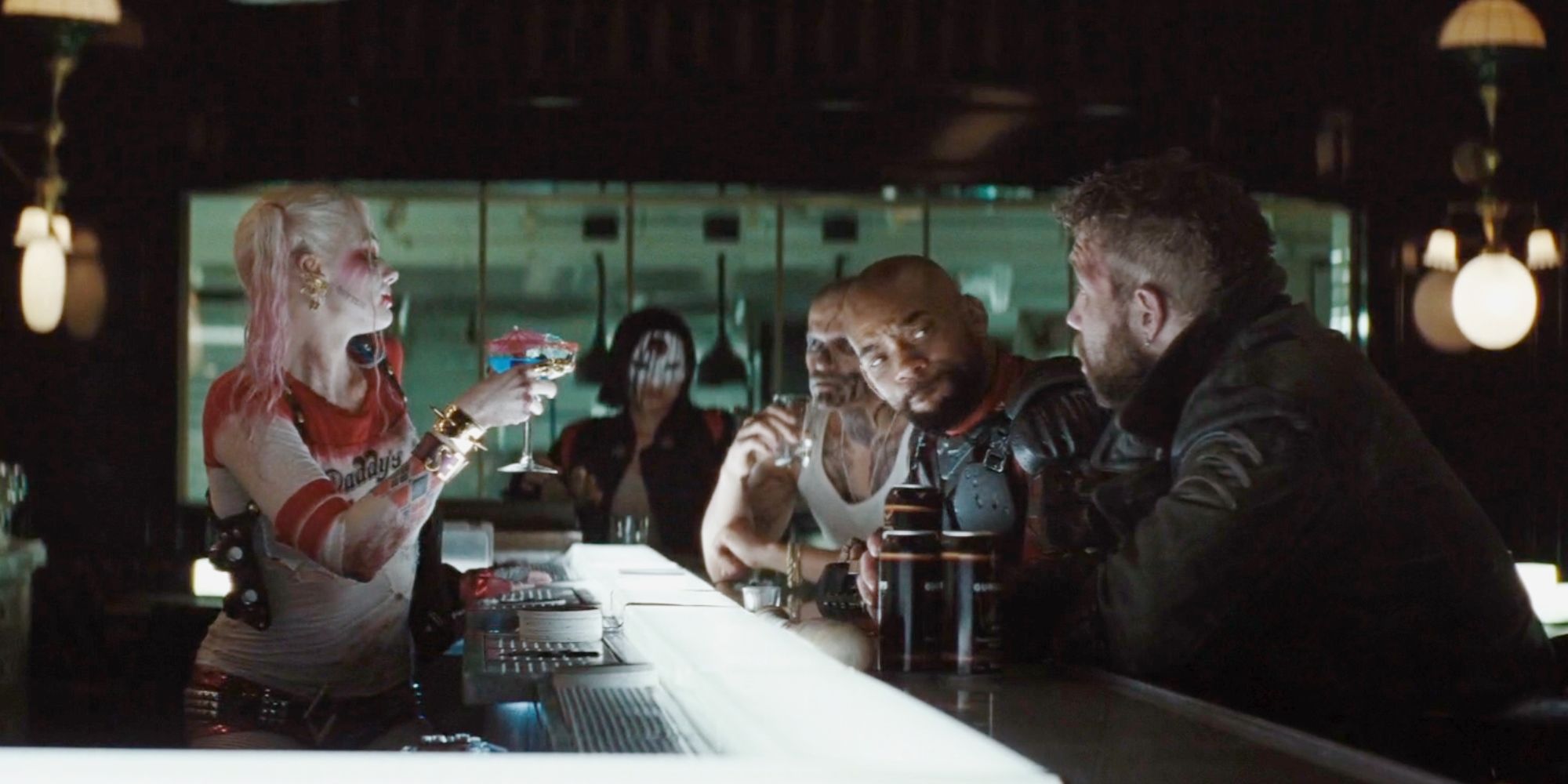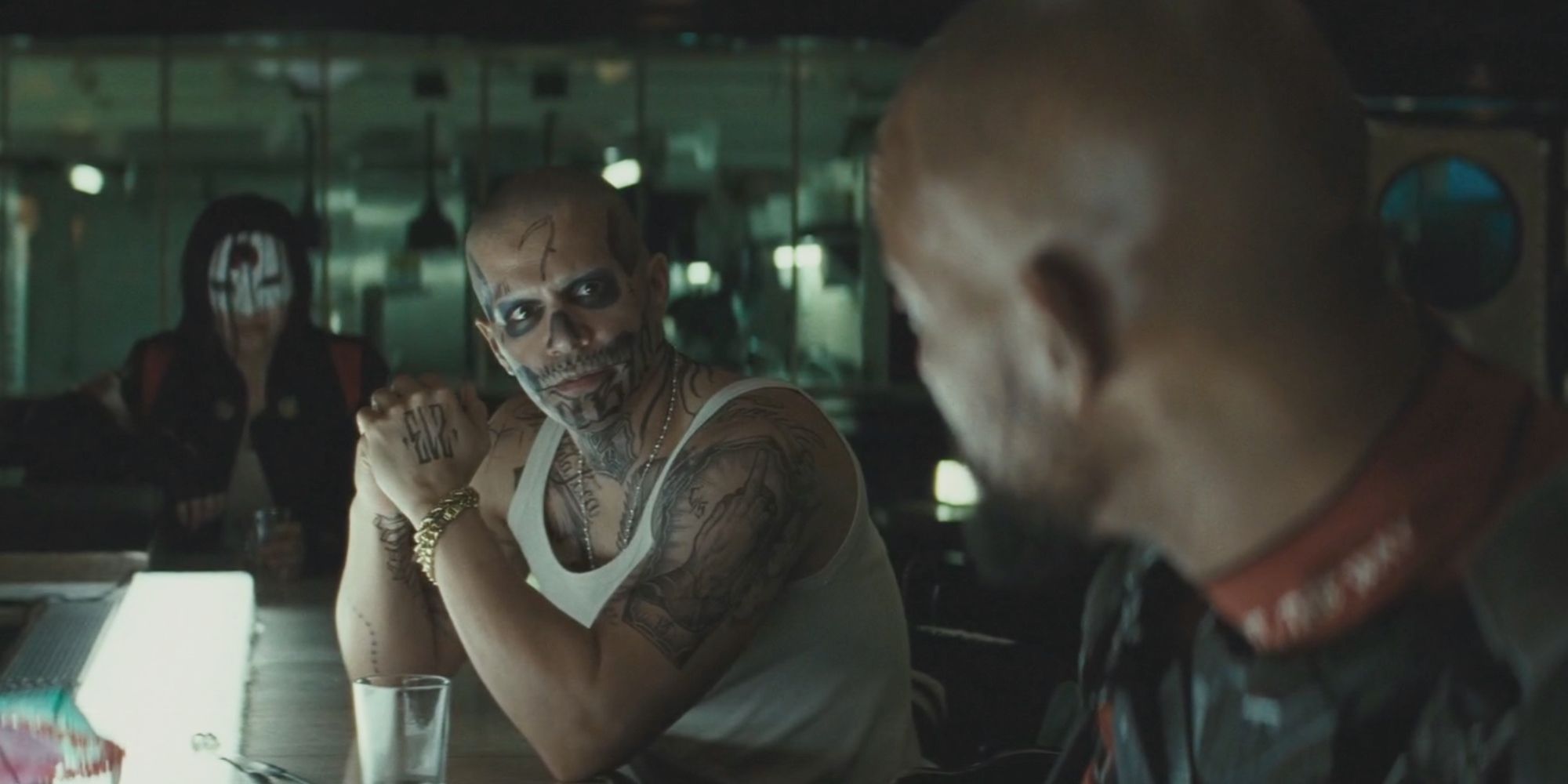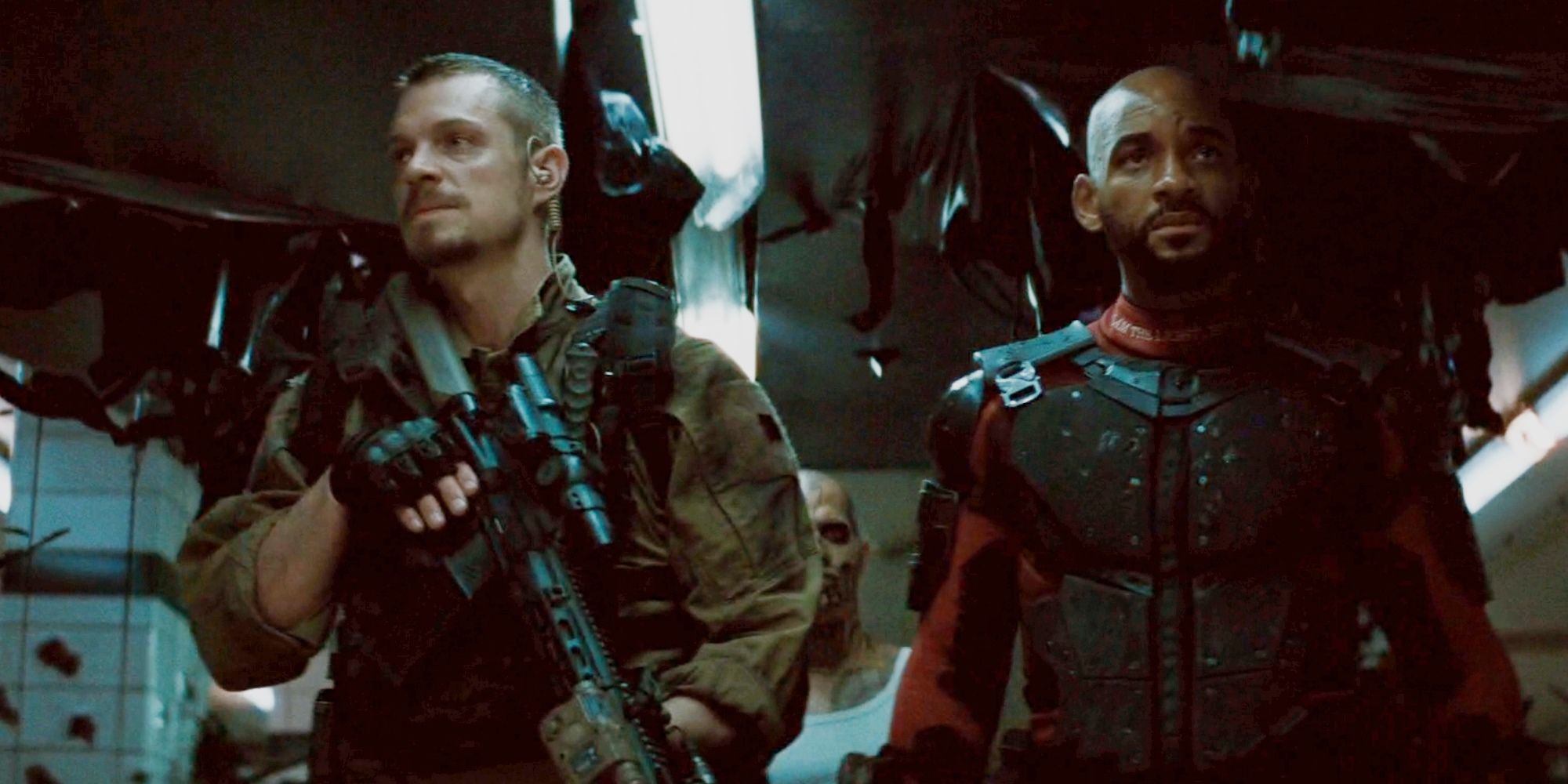[WARNING: This article contains spoilers for Suicide Squad and its Extended Cut.]
-
It wasn't long after the release of Suicide Squad that movie fans began to realize just how much footage had been left on the cutting room floor, following memorable moments used in the trailers - and apparently a whole lot of Jared Leto's Joker - were cut from the film for the sake of a central plot and pace. As much as the decision irritated some, the official stance at release was that the theatrical cut was the final word. Nevertheless, the demand was made clear - and the Suicide Squad: Extended Cut was officially announced.
Now the Extended Cut has arrived on home video, and while it's nowhere near the overhaul seen in Batman V Superman's 'Ultimate' cut, there are plenty of extended scenes, new exchanges, and a deeper dive into the motivations and mad love between Joker and Harley Quinn. Whether or not these added scenes and character moments make for a better film is a separate issue entirely (read our take on that question HERE), but for those curious to see how much has been changed, or for fans eager to see what they have to look forward to, allow us to help.
Needless to say, there will be SPOILERS ahead in our look at Every Difference in Suicide Squad's Extended Cut.
17. Dr. Quinzel's Medicine
The most significant change to the movie brought with the Extended Cut is the relationship between Joker and Harley Quinn, and it begins with their very first scenes. The introduction is the same, with Amanda Waller detailing Dr. Harleen Quinzel's work with the criminal at Arkham Asylum - but the Joker's actions following his breakout now make a bit more sense. In the theatrical cut, it's easy to see that Joker's men strapping Harley to a table, and letting him shock her with electrodes is some sort of simple revenge, or twisted act of violence.
The Extended Cut adds some dialogue explaining Joker's motives. According to Harley, there's no need for violence since she succeeded in "helping" him - Joker corrects her, explaining that what she really did was "erase his mind... work through faded memories I had." Having left him enraged and confused, he's seeking to return the favor - but the lines offer a significant glimpse into their actual bond. If Dr. Quinzel did what Joker claims, then not only was his mysterious past dug up, but the two of them did it together.
If true, then nobody knows Joker like she does... and knowing his past, and loving him for it, not despite it, helps flesh out their relationship.
16. Killer Croc's Dinner
The only other character introduction padded by the Extended Cut is, fittingly, Killer Croc. As one of the most criminally under-served villains of the film (a problem, when you have this many beloved antiheroes in one place), fans will be happy to see not only more screen time, but his introduction used for an added gag (or two). In the original film, the guards led by Alpha-01 (Ike Barinholtz) approach Croc's sewer cell, and drop a butchered goat in for his meal. Croc drops to retrieve it, and we cut back to Amanda Waller spearing a piece of bloody steak.
In the Extended Cut, the guards take a bit more time. It's one scene that helps establish a somewhat different pace for the film as a whole: strange, with a sense of humor, and jumping from one beat to the next, but also interested in stopping to take in smaller scenes within the world of Belle Reve and its villains. The look at Croc is only a few seconds longer than usual, but seeing him pick up the goat, cradle it under his arm, and plop it onto the ground before pouncing on it - punctuated by sounds of biting - makes the cut to Waller eating a bit more effective, as well.
Since the original feeding scene doesn't tell you much about Croc at all, this version establishes his slow, vicious, but somber and intelligent personality.
15. Director Cameo
The Killer Croc feeding scene also gives director David Ayer a chance to get in on the fun himself, appearing in a cameo role as one of the other prison guards assisting Alpha-01 in the feeding. Officially designated as 'C10', Ayer inquires as to the mythology behind Croc, asking his superior if the beast has actually bitten the hands off of previous guards. It's no myth, and the nearby guard with a hand of "vulcanized rubber" is all the proof Ayer needs. The cameo confirms the suspicions of those who thought they spotted Ayer in the group of guards, and this scene, and the closing credits confirms Ayer is playing the role of 'Smitty,' the guard who hands Alpha-01 his firearm (with Night Vision scope) in the theatrical cut.
As an added bonus, fans now get to watch as the director singlehandedly lugs the goat carcass out of its container and into the nearby hole on a single meat hook. Considering how much trouble Ayer has in actually hefting the massive prop, fans can assume there was plenty of smirking behind the camera.
14. A Moment With Deadshot
The character who is next most effected by the Extended Cut is Will Smith's Deadshot, as his personal mission to return to his daughter, and coming to grips with the notion of 'love' is developed in a number of short scenes. The first of which comes after Waller has convinced the U.S. military to sanction the formation of Task Force X. In the theatrical cut, the action then immediately cuts to the Bell Reve landing strip, as Waller and Flag arrive to begin their inspection.
In the Extended Cut, the film instead cuts to a somber moment starring Deadshot, standing in his cell, staring out his small window into the overcast sky beyond it. That alone would be an interesting addition, driving home how miserable the existence of the villains really is (since the movie actually opens on the same kind of message). The visual is accompanied by voiceover from Deadshot's daughter, too, taken from his introduction scenes with her. Since his connection to his daughter forms the bulk of his character arc, this added reminder helps keep audiences clued in.
13. Added Security
Not every change made in the Extended Cut is a significant, one, but we're categorizing each and every one. El Diablo's first interaction with Waller and Flag is actually one of the more memorable, helping set the stage for his reformation in the wake of the criminal he used to be, and eventual adoption of a new mission. In the theatrical cut, the scene simply jumps from Flag's meeting with Croc to Alpha-01 approaching Diablo's watery cell, baton in hand. But in the Extened Cut, the audience is given an extra clue that Diablo may be the most dangerous of the group - making his turn to goodness even more significant.
It's simply an added shot featuring Alpha-01 begin his march to the cell, but filmed from a higher angle, showing what first looks to be a prison sniper in position to strike should Diablo attack - with one noticable difference. The guard in question is dressed in a fire proximity suit, the same reflective garb worn by some of the guards who release Diablo from his cell when the team is called into action. And instead of a rifle, his weapon looks to be either a water hose or chemical flame retardant device. The moment raises the implied danger before Diablo dispels it, but the scene doesn't really need the moment to drive that point home.
12. Croc Loses His Lunch
The team's boarding of the helicopter before heading into Midway City is packed with comedic beats, usually courtesy of Harley (her first acquaintance with Katana, for instance). But there was another one planned and filmed, as revealed in the Extended Cut - one that doubles down on the idea that Killer Croc may appear the most vicious of the group, but is actually more relatable than he seems. More relatable in the sense that he pukes his guts out as the helicopter begins its flight into the city, with Harley Quinn citing the act as a serious "party foul."
The most interesting detail of the scene is that it adds yet another similarity between DC's Suicide Squad movie and the publisher's "Suicide Squad" comic relaunched as part of DC's "Rebirth" initiative. The fact that both villain teams are essentially identical seemed a clear move to attract movie fans to the comic rack, but the odds of both sets of storytellers coming up with a vomiting Killer Croc as a story beat simply can't be coincidence. Fate is real, people... even if the vomit almost killed Croc in the comic book version.
11. The Word Spreads...
Before the Squad fully realizes the gravity of their situation, and assumes that killing Flag and his men is all that stands between them and their freedom, Deadshot hatches a plan. The theatrical cut showed such scheming, with Deadshot telling Harley that he would take out most of the soldiers, then require her help - mainly, by having her "friend" defuse the explosives in their neck. He then tells her to "spread the word" of the plan, and the audience is left to assume it has happened (or didn't, since they encounter resistance immediately afterward).
The Extended Cut shows that word being spread, giving each of the villains more screen time and a chance to interact. Harley begins by informing Boomerang that they plan to bail, and the thief needs to hear nothing more. He gives the heads-up to Diablo, who immediately raises some doubts. Instead of simply taking the order to 'hit Flag with a fireball' Diablo wonders what the endgame is: they're criminals, not yearning to free themselves from captivity. Unfazed, Boomerang heads to fill Killer Croc in on the plan, too.
Diablo's warnings that Boomerang should think twice about getting friendly with Killer Croc aren't given much thought by the Australian, and Diablo elaborates. He explains that - just like the comics - Croc actually is a cannibal, and therefore the risk of him eating one of his fellow prisoners is a real one. Instead of listening, Boomer persists - and the audience actually watches from Diablo's perspective as Croc launches an arm out, sending Boomerang smashing into a pile or trash nearby (after the Captain presumably got too cheeky with KC). It's a comedic beat, but it does help establish a few significant character details and subplots.
For starters, it shows that Killer Croc is also possessed of superior strength, not just a skin disease or strange hunger for human flesh. Secondly, it doubles down on Boomerang's desire to break out at every possible chance, a note that comic book fans will be delighted to see made even clearer (since his gutless scheming is a main character trait in nearly every incarnation of the villain). And most importantly, it illustrates that Diablo is not going to bow to peer pressure and join in on the action under any circumstances. That detail helps explain why Boomerang seems personally offended by the fact that he stands by during the following battle, refusing to use his powers.
Not agreeing to attack their guards in an escape plan is one thing, since Boomerang let it lie the first time. But refusing to do anything even when their lives are in jeopardy is taken as a personal insult. Since Diablo's arc from objector to defender is limited to about three or four scenes in the theatrical cut, having one more to explore his complacency is welcome.
10. Deadshot & Flag Make a Deal
The theatrical cut includes the moment when Deadshot stops on their path to the target, fixated on a department store window display depicting a young girl and her parents. It stands well enough on its own, but in the Extended Cut, it actually acts as an introduction into a more plot-relevant scene. With his daughter on his mind, Deadshot is approached by Flag to clarify exactly what is expected of him on this mission - and what the real dangers and rewards might be. Flag tells him that regardless of what Waller might claim, if Deadshot comes through for the soldier, and gets his rescuee to a rooftop extraction, then Deadshot's job is over - and freedom, payment, and his daughter will be his.
The scene helps in the larger story for two reasons: first, it calls back to an earlier scene when Flag had a standoff with Waller, claiming that he had friends in high places who would help him handle Waller if need be. Waller immediately brushed that notion aside, reminding him that she was infinitely more ruthless, and he was stuck. Secondly, it explains a later exchange between Flag and Deadshot, after Waller has boarded her helicopter and is shot out of the sky by the film's villains. Flag orders the team to extract her, but Deadshot reminds him that they had a deal - and his part is done.
Flag replies by saying that without Waller, there is no deal - which can mean two different things. Either Flag is admitting he was bluffing, and it's Waller who has the authority to grant Deadshot's freedom, not him. Or, that Flag was going to keep his word, and planned to actually exercise some authority with Waller. Either way, it links Deadshot and Flag on a more personal level... making the latter's reveal of letters from Deadshot's daughter even more of a betrayal later on.
9. Who's The Target?
It's safe to say that the theatrical cut took plenty of audience members by surprise when the 'twist' of the film was revealed. After the team fights their way through a besieged office building, instructed by intel from Waller's team the entire way, they reach their target only to find that... Waller has been their mission the entire time. Since the fact that the team was actually on a 'search-and-rescue' mission isn't clearly communicated, viewers can be forgiven for taking some time to grasp the change in status quo.
In the Extended Cut, there are a few more clues, the most obvious of which comes as Flag and his crew take a knee to assess the situation following the first attack from the Enchantress' forces. As the soldiers converse, Deadshot interjects, flat out asking who their target really is. Flag brushes the question off (and the following suggestion from Deadshot that it's the President), but the audience is given the hint that it's a question they should be asking, too. The twist is sprung later on, so it's not a pivotal exchange, but it does prepare the audience for a twist at all.
8. Motorcycle Flashback
As Deadshot spars with Flag, the scene shifts to Harley, taking in a nearby motorcycle as a daydream/flashback kicks in. It's this flashback which was caught being filmed on set, leading fans to wonder what action scene would put actress Margot Robbie on a motorcycle in pursuit of the Joker's signature ride (also shown in the trailers and TV spots) - not to mention placing a gun to the Joker's forehead. The Extended Cut offers the answer, and helps confirm one reading of the Joker/Harley dynamic - and arguably close-off another one suggesting the pair's bond was abusive.
The scene follows Dr. Quinzel - not Harley - as she pursues Joker, clearly unwilling to part ways, skidding her motorcycle to a stop in front of his car even as he voices his frustration at this "pain in my ass." But the suggestion that Joker is just sick of a plaything is undercut quickly, as Harleen professes her love and devotion, and Joker responds by explaining that "I am not someone who is loved... I'm an idea, a state of mind." And as outlandish and crazed as Joker might seem, he lives according to his own plan - "and you, Doctor, are not part of my plan."
Taking the comic book symbolism out of the equation, the exchange is actually a relatable one (especially given the previous hint that Harley has seen the real person Joker himself suppressed). Harleen loves him for who he is, and he pushes her away out of a belief that someone like him isn't meant to be loved. The movie also proves that Joker has a knack for complex plans, so his urge to stick to what he knows - and not this devoted partner he never accounted for - also adds up.
At this point in the scene, another driver exits his truck and is silenced with a gunshot by Harleen before Joker can speak. With gun in hand, Joker encourages Harleen to kill him, causing her to note with pain that he's more afraid of being loved by her than killed. Joker notes that Harley is too crazy to actually be insane... which leads into the scene that follows: the second flashback showing Harley Quinn's chemical bath at the hands of the Joker.
Taking in everything exchanged in this scene and their introduction, and Joker's decision to test Harley's devotion takes on a new light - he is actually testing her to see if she'll snap out of the delusion. When she takes the plunge, Joker should be in the clear, free to return to his plan and existence as an idea, not an actual person for whom love is possible. But he only takes a few steps before realizing he can't leave, and dives in to join Harley.
They're both messed up. But Harley refused to let Joker push her away. And in the end, she made the dive... and he followed her.
7. Harley Plays With Her Prey
Aside from the diagnosis of Deadshot as "just another textbook sociopath," the movie itself doesn't offer much evidence of the psychotherapist Dr. Harleen Quinzel once was. The Extended Cut remedies that issue, but does it in a way which still accentuates Harley's villainous side (in other words, she still possesses that knowledge, but... any desire to use it for good is gone). As the team makes their way to the target building, Harley begins by playing with the criminals around her, first with Killer Croc, deciding that mother issues are the reason for his hostile nature, and view of the entire world as one big sewer.
Aside from Harley's analyzing, it's another moment aimed at fans of Killer Croc, as he explains that he consumes people to gain their strength - and no, he doesn't want to eat Harley since he has no need of "her crazy." It gives Croc another solid scene, and at this point in the movie, achieves two goals: it shows that Harley is still not considering herself a part of this group she's teasing out of boredom, and placing it immediately after a flashback of the Joker telling her to "go away," the audience knows it's a sign of her insecurities. In short: pushing people away before they can do the same to her.
6. Katana Unmasked
After making Killer Croc's psychoses her playground, Harley shifts to the quietest member of their group: Katana. Now comic book readers already know Katana's story, and the many tragedies, heartbreaks, and murders that it entails. But Harley Quinn definitely doesn't, assuming that she wears a mask as a means of hiding who she really is (since her father must have wanted a son, and only got a single daughter instead). And the silent assassin is quick to show exactly how wrong she is, by removing her mask completely.
Uttering the single line "I... am not... hiding" gives actress Karen Fukuhara a moment to actually show her face on-screen, and places even more emphasis on the idea that while Katana's story isn't part of the film, it most definitely exists outside of it. That won't come as much consolation to those who wanted to actually see it told, but take what you can get.
5. Everyone For Themselves, Right?
The idea that Harley Quinn is actually a lot more of a romantic, emotional basketcase at this point in the story is driven home in her final interaction with Deadshot - and so is the fact that he is the only one capable of actually herding these cats towards a mission. It's Deadshot who finally steps in, insisting that Harley has to keep her boredom and teasing in check, since the team will have a lot harder of a time fighting their way out of the city if they, you know, are sick of eachother. Unfortunately, Harley just turns her crosshairs on Deadshot.
Clearly suspecting that he's got some kind of deal worked out with Flag, she dismisses his attempts at leadership, claiming he's a "rat" and a "sellout." Deadshot doesn't protest, but Harley is figuring it out, claiming that obedience will lead her back to her cage in Belle Reve - but the same might not be true for Deadshot. She ends by concluding that she knows the rules of the game, and the real world, and that "when it comes to the heart... it's everyone for themselves." Take that two ways: she knows Deadshot will leave them behind to get to his daughter (or whichever loved one she assumes), but it's also Harley justifying her abandonment of the team she's planning once Joker arrives.
4. Drinks All Around
The scene in which the Squad takes a break before their final assault for some drinks and banter at an abandoned bar appeared in plenty of trailers and TV spots - but the moments used to punctuate them sadly didn't make it into the theatrical cut. They return in the Extended Cut, as the scene makes good on the name and appears in an extended form. Beginning with Killer Croc's refusal of a drink ("drink clouds the mind"), he eventually concedes, as the team makes their drink orders and Harley happily pours.
After the previous scenes spent a greater deal of time with the disparate team members, and Harley pushed this new family away, the extra time spent showing them commiserating over the "end of the world" makes sense. More time means more humor, and Harley's response to Diablo's order of a simple water fits in the scene as well as fans would have hoped for from the trailers. It's still not a big departure from the theatrical version, but fans will be pleased to see these teased moments finally placed in the finished cut.
3. An 'Asset Relocation Specialist'
Captain Boomerang got the opportunity to deliver a handful of one-liners in the theatrical cut - and a few more in the Extended - so it's nice to see even an offhand comment slip through. As Deadshot toasts to honor among thieves, Boomerang, in typical comic book charm, clarifies that he actually thinks of himself as more of a "asset relocation specialist." It fits the character, but it's also easy to see why his added joke was cut.
Since the decision was made to cut down the time spent among the criminal cast members, the overall amount of jokes was cut down as a result. The bar scene, in the final cut, plays far grimmer as a byproduct, which would make his joke - perfectly fitting for his personality - seem out of place here. But combine this bit of wit with his earlier mention of Socrates in response to Diablo's questioning, and Boomerang is obviously brighter than he likes to let on.
2. El Diablo Explodes
The supporting cast members may not get many chances to stand out among stars Will Smith and Margot Robbie, but Jay Hernandez's challenge to Deadshot's idea of "hope" was one of the few. In the theatrical cut, Diablo remains silent until Deadshot mentions the 'H' word, but the Extended shows his frustrations building much sooner. It begins with his statement that they were never chosen because they were likely to succeed, even if it got them killer, but because they were doomed to fail, and therefore just be used as a cover-up for Waller's actual mistake.
Deadshot continues, explaining to Harley that he had made a deal with Flag to return to his daughter - a deal that now wouldn't be honored. At this, Diablo explodes, mocking Deadshot for believing anything other than Flag using his daughter as a carrot on a stick (triggering Harley's "I love this guy" seen in the marketing). The moment turns a bit more heated between the two men, showing that criminal team-ups are usually rougher than heroic ones, while giving an angrier, more pained entry into Diablo's own backstory.
1. "...And Then I Met June"
If there's one subplot that struggles in the theatrical cut of the movie, it's the romantic subplot between Rick Flag and June Moon (the audience is basically just told they're in love, and expected to believe it). So when Flag appears in the bar in tears over his inability to rescue the woman he loves, it may strike some viewers as unearned, or out of place - the same goes for the final reunion. The scenes between Flag and Deadshot in the Extended Cut build a bit more of a rapport between the two men, and once the June bombshell is dropped, may even help explain why Flag was willing to promise the impossible to get Deadshot's help.
As they make their way to the villains' base of operations, Flag and Deadshot have another heart-to-heart, in which Flag explains that he had never actually believed in true love. He believed in the practical, and the real... until he met June. Flag doesn't know it, but the audience has been shown that Deadshot followed a similar story in his own life, insisting to Harley that he's never been in love, that it wasn't possible - a fact that likely changed when his daughter entered his life.
Deadshot agrees to do what he can to save June for Flag, and helping develop what ends up being a major theme of the movie - brought to a close when Deadshot embraces his daughter, and returns her "I love you" with more than words behind it.
-
So there you have it, every new joke, moment, shot and scene added to Suicide Squad's Extended Cut. Let us know what you think of the changes, and which moments should have made it into the theatrical version in the comments below.
Suicide Squad's Extended Cut is available for digital streaming, with a Blu-ray and DVD release today.

